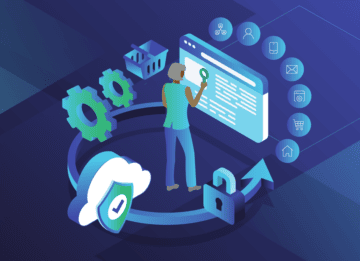
The Power of Persistence
Supercharge Your Marketing Efforts With a Simple Solution
Customer expectations are fairly straightforward: they want to be treated like a person and they expect companies to understand their needs and expectations. Meeting those expectations is rewarding; 67% of people surveyed told Salesforce that they’ll pay more for a great experience.
But how do you get there? The key is consistent recognition.
That same study found that 70% of customers say that connected processes — such as seamless handoffs, engagement based on a great customer experience, and connecting the customer experience from media to engagement to enterprise customer management systems —are incredibly important to winning and keeping their business. This makes persistence fundamental.
A persistent identity layer for your customers and prospects is what makes Identity Resolution successful.
What is a Persistent Identity?
Essentially, it’s an ID attached to a number of pieces of the core identity, so if one of those identifiers changes (for example, if someone moves or changes their phone number) the ID is attached to the other parts of that identity. Persistency is maintained.
Being able to recognize a person from fragments of their identity gives you both the ability to recognize people when they’re engaged with you and provide them with the most relevant messaging. But this shouldn’t be a one-time event because people expect a consistent experience.
People interact through so many channels and use so many different contact information types, you need to have a way to bring them all together. Identifying someone in the moment they’re engaged with you is great, but how do you tie all of the information they provide together when they may sign-up for your email, then call customer service or provide a home and business address for different deliveries?
Persistency In Action
For example, let’s say that Chris signs up for a monthly email newsletter from his favorite supplement company when visiting in-store. The next month he gets the newsletter, and orders vitamins on his laptop. After he completes his order, he remembers that he also wanted CBD tincture to help him sleep, so he goes to the site on his phone’s browser and is greeted with the message, “Welcome Back, Chris,” before he even logs in, and makes his purchase of a trial size of CBD.
Chris tweets about how great he’s been sleeping, thanks to the company’s CBD. The company matches his Twitter handle to his account and recognizes him as a purchaser. Because he’s shown that he makes purchases after receiving an email, they send him a personalized email offering a discount to make a purchase of a three-month supply of CBD.
When Chris tweeted that the CBD product was helping him, the company could have sent him a direct message, but matching his Twitter handle to his persistent ID and his account gave the company context and history. This enabled them to directly send him the best offer, based on their complete picture of him as a customer.
Three months later, Chris goes to their website to buy organic coffee for a friend and has it shipped to her address. Before he logs in, he’s shown content about how green tea is great for midday energy boosts. Because the company has a persistent identifier for Chris, they’re able to tie his vitamin purchase to his account and Mobile Ad ID. When he makes a purchase for his friend, the company knows that it’s a gift, and adds him to their “gift buyer” audience segment for later use.
By connecting all of Chris’s fragmented identifiers to a unified view, the supplement company not only maintains a good customer relationship, they also improve it. They didn’t show Chris content for products he’d already purchased, but instead, they displayed complimentary content relevant to his interests. And even though he’s made a purchase for someone else Chris isn’t bombarded with re-targeted ads for an item he bought as a one-time gift, because the company knows not to advertise to him for those products.
Applying the Persistent ID
A customer ID is just a starting point — but you need to map that to an anonymous, persistent ID that you can use to keep up with the changes to their information and also recognize your customers or hand-raisers when they provide you with new information.
That persistent identifier should be unique per-person and per-business or brand that uses the identifier. Since it’s unique and anonymous, it’s secure and portable throughout your internal platforms and across external MarTech platforms.
When the persistent ID is mapped to your customer ID and is available in real-time, gives you a privacy-safe way to improve your marketing efforts at all stages of the customer journey.
Want to know how our persistent PersonID works? Check out the blog detailing how we created it.
Recent Blogs
-
 February 25, 2025 Introducing Email Signals: Unlock Powerful Email Engagement Insights Customer 360, Customer Experience, Marketing & Sales, Enrich API
February 25, 2025 Introducing Email Signals: Unlock Powerful Email Engagement Insights Customer 360, Customer Experience, Marketing & Sales, Enrich API -
 August 28, 2024 The Sales Rep's Guide to Maximizing Productivity with Website Visitor Data Acumen, Media Personalization, Marketing & Sales
August 28, 2024 The Sales Rep's Guide to Maximizing Productivity with Website Visitor Data Acumen, Media Personalization, Marketing & Sales -
 August 6, 2024 Turn Visitors into Leads: How to Install the Acumen Web Tag in 5 Easy Steps Acumen, Website Recognition
August 6, 2024 Turn Visitors into Leads: How to Install the Acumen Web Tag in 5 Easy Steps Acumen, Website Recognition